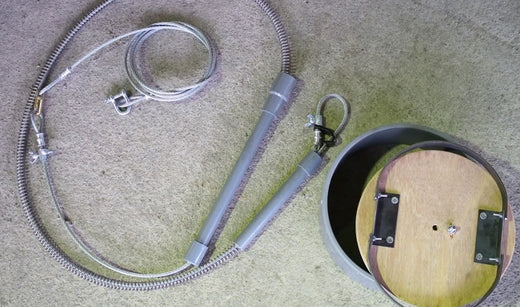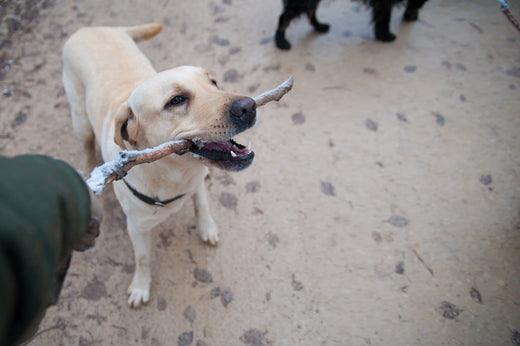When the sun sets on a mountain road with no streetlights, it is so dark that you cannot see your feet.
Especially in the case of unfamiliar mountain roads, the risk of slipping, falling, and getting lost increases, and above all, pitch-black mountains instinctively feel fear.
Therefore, it is recommended that you always carry a light with you when entering the mountain.
Why we recommend portable lighting
Shooting hours are limited to sunrise and sunset, and there are many activities near sunrise and sunset in low light conditions.Also, in trap hunting, you basically patrol the traps you set every day, so people who have other jobs during the day will be more active during dark hours.
Even if you were planning to work while it was still bright, it would be best to bring a light, considering the possibility that the schedule may be significantly delayed due to unexpected troubles.
Then, when it comes to lighting, we do not recommend pen-type or lantern-type lighting that blocks your hands.
Of course, it is good to carry these types, but we recommend a "headlight (headlamp)" that does not block your hands.
This is because it is fatal to have your hands blocked when carrying prey in the dark, descending steep slopes, or walking on poor footing.
Also, in trap hunting, there are many situations where you work with both hands while lighting your hands in the dark.
Headlights are still necessary, even when dismantling prey in the dark.
Criteria for choosing headlights
Many headlights are currently on the market, but their functions and performance vary.In any case, it's not just about being bright, it's about choosing a product that has performance that matches the hunting situation, such as battery life, comfort when wearing it, and waterproof performance.
Brightness (Lumen: lm)
The first thing to check is the brightness.The brightness of headlamps is commonly measured in lumens (lm). The physical quantity that expresses the brightness of light passing through a surface is called luminous flux, and the intensity of the luminous flux (total luminous flux) emitted from a light source in all directions is expressed in lumens.
Most lights have a lumen value listed on the packaging or in the product description for mail order. It is written as maximum XX lm, but even with the same lumen value, there are variations for each manufacturer.
When you actually use it, it may be that the product with lower lumens is brighter, so it is a good idea to use this as a reference when comparing products from different manufacturers.
By the way, it is said that 300 lumens or more is the brightness that allows you to see the situation 10 meters ahead while riding a bicycle at night.
There are no streetlights in the mountains, and the movement speed is not as fast as a bicycle, so 300 lumens will feel quite bright.
Anything up to 300 lumens with adjustable brightness is fine.
In addition, we recommend a model that can irradiate both a wide beam that illuminates the hand and a spot beam that can reach farther.
Recently, there are also models that automatically adjust the amount of light to an appropriate level using a built-in sensor. useful.
Irradiation time (battery life) and battery type
The next important checkpoint after brightness is irradiation time (battery life).Naturally, the higher the output, the higher the battery consumption and the shorter the irradiation time.
The index that expresses the irradiation time (battery life) is described in the form of "◯◯ hours (h)" on the product detail page, etc., but as with the brightness mentioned above, even with the same nominal value, there are actual differences between manufacturers. .
Therefore, it is best to choose a product with a long irradiation time (battery life), but it is better to emphasize the ability to use spare batteries.
Many types use AA or AAA alkaline batteries, which are easy to get anywhere, but there are also lithium-ion battery types that can be used as mobile batteries for smartphones.
comfort
Among the specs related to comfort, the number that I want to pay particular attention to is the weight.Since it is worn on the head, even a difference of several tens of grams can make it feel heavy.
In addition, the front and rear weight balance is also important. If the balance is bad, the light position will shift while you move your head.
However, if the belt is tightened, it will feel oppressive and worrisome.
There are some headbands that are not tight enough when you buy them and are easy to slip off, so check the reputation on the internet etc. before purchasing as much as possible.
On Amazon, etc., it is convenient because you can see customer reviews in the product details.
Waterproof
Since the headlight is an electronic device, if it is possible to work in bad weather, I would like to check whether it has waterproof performance.Batteries and dry cells don't like moisture, and if they are left wet for a while, they will leak.
In addition, rust may cause poor contact between current-carrying points.
In the first place, there is an option not to go hunting on rainy days, but if you are preparing for unforeseen weather changes or working near water, it is better to have high waterproof performance.
The waterproof performance of a headlant is represented by an index based on the international standard for waterproof performance called the IP code.
"IPX 〇" is written on the product detail page, etc., and the larger the number corresponding to the 〇 part, the better the waterproof performance.
The number corresponding to the X part represents the dustproof performance, and the larger the number, the better the dustproof performance. There are levels of waterproofing from 0 to 8, and dustproofing from 0 to 6 (see the table below for waterproof performance).
| standard | Standard of waterproof performance |
|---|---|
| IPX4 |
Protection against water spray from all directions |
| IPX5 |
protection against water jets |
| IPX6 | Protection against strong jets of water |
| IPX7 | Protection against temporary submersion (1 meter for 30 minutes) |
| IPX8 | Protection against long-term submersion (at depths greater than 1 meter for the time specified by the manufacturer) |
best headlights for hunting
Based on the above, which headlights does Inohoi recommend? . . ." Black Diamond Storm 350 Lumen ".
Let's start with a cool promotional video from Black Diamond.
The basic specifications of the Storm 350 lumen are as follows.
Total Luminous Flux: 350 Lumens (Quad Power LED)
Irradiation distance: 80m (high illumination)
Battery life: 22 hours (high light), 160 hours (low light)
Dust and waterproof level: IP67
Batteries: AAA alkaline x 4
Weight: 110g (including batteries)
It's a well-balanced model in terms of brightness, dimmability, IP67 waterproofing, and the ability to use AAA batteries, which are easy to find anywhere.
In addition to white light, green, red, and blue light can also be used.
When you turn on the lights after your eyes have become accustomed to the dark, it is too bright to see a sudden strong light, so the green light is especially useful.
The easy-to-adjust double adjuster headband and cushioning material on the back of the light unit make it comfortable to wear.
The price is just under 5,000 yen on mail order, which is a little more expensive than the one from an unknown manufacturer. I think it will last a long time and cost performance is good.
Finally, there is an important but often forgotten point.
It is necessary to carry a spare battery and check the operation in advance. Let's make sure that the light does not turn on when you are about to use it.

 箱罠
箱罠
 くくり罠
くくり罠
 パーツ類
パーツ類
 電気柵
電気柵
 自作キット
自作キット
 防獣グッズ
防獣グッズ
 監視カメラ
監視カメラ




 box trap
box trap
 tying trap
tying trap
 enclosure trap
enclosure trap
 Prevention and avoidance goods
Prevention and avoidance goods
 electric fence
electric fence
 trap surveillance camera
trap surveillance camera
 transportation goods
transportation goods
 Trap detection sensor
Trap detection sensor
 hunting supplies
hunting supplies
 hunting books
hunting books
 Anti-bird goods
Anti-bird goods
 Agricultural materials/machinery
Agricultural materials/machinery
 boar
boar
 deer
deer
 Kyon
Kyon
 monkey
monkey
 raccoon
raccoon
 Badger
Badger
 palm civet
palm civet
 raccoon dog
raccoon dog
 nutria
nutria
 mouse or rat
mouse or rat
 Mole
Mole
 bear
bear
 pigeon
pigeon
 Crow
Crow







